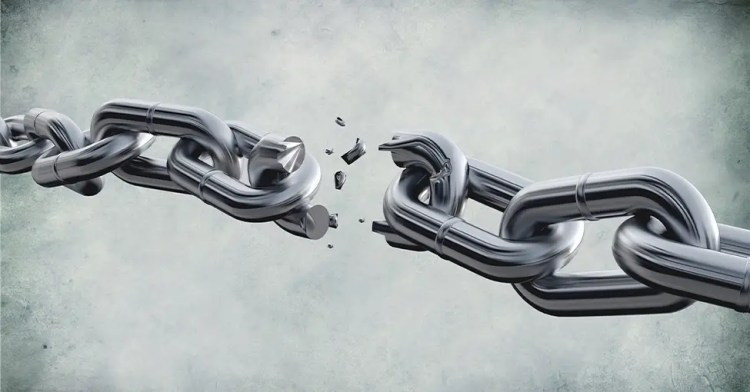In today’s digital world, standing out amidst the sea of websites is a formidable challenge. A potent strategy to rise above the rest is broken link building. It is a vital tool for any savvy SEO professional. It is also a strategy that can effectively tip the scales in your favor.
Broken link building is not a mere buzzword; it’s a tried-and-tested methodology. It can increase your visibility, garner organic traffic, and help you climb the SERPs. But what does it entail? Why should you even consider it as part of your SEO strategy?
In the simplest terms, broken link building is like a treasure hunt on the internet. Instead of hunting for a chest full of gold, you’re on the hunt for growth and visibility. It involves seeking out broken links and crafting superior content to replace the lost or non-existent material. Lastly, you’ll need to persuade the website owner to link to your newly created content. It’s a win-win for all parties involved. The website owners get to fix their broken links, and you get a valuable backlink.
In the grand scheme of digital marketing and SEO, broken link building plays a pivotal role. It’s not just about fixing what’s broken; it’s about leveraging these opportunities to create a robust backlink profile. The result? Increased authority, enhanced credibility, and improved rankings. This is the power and importance of broken link building in the digital landscape. It’s high time we delve deeper into this strategy and unlocked its potential!
What is Broken Link Building?

Broken link building is an SEO strategy that is as straightforward as it sounds. It involves finding broken links on a website, crafting better content to replace the original, non-existent content, and then reaching out to the website owner to suggest replacing the broken link with a link to your content.
In short, you’re offering a service by helping website owners clean their sites and improve user experience. In return, you gain a valuable backlink in the process. It’s a symbiotic relationship, a strategy that adds value to all parties involved.
Why is Broken Link Building Important?
Now that we’ve defined what broken link building is, it’s time to discuss why it’s important. The answer lies in the heart of SEO itself – backlinks.
In the realm of SEO, backlinks are akin to currency. They are the lifeblood of your website’s visibility and authority. Search engines, especially Google, view backlinks as votes of confidence, as endorsements. When a reputable site links to your content, it’s essentially vouching for the quality of your content.
However, not all backlinks are created equal. High-quality backlinks from authoritative and relevant sites carry more weight. This means that they influence your SEO rankings more.
Moreover, a robust backlink profile also results in more organic traffic. As your site climbs the SERP ladder, your visibility increases and this leads to more organic traffic. The real kicker here is that organic traffic is typically more engaged and more likely to convert.
In a nutshell, the importance of broken link building cannot be understated. It improves your SEO rankings by attracting organic traffic. Furthermore, it helps you establish authority and credibility in your niche.
How to Find Broken Links
The first step in the process of broken link building is finding the broken links themselves. It might seem like looking for a needle in a haystack. However, with the right methods and tools at your disposal, this task can become significantly more manageable. Let’s explore the two primary ways to hunt down these elusive broken links.
SEO Tools for Broken Link Building

There are several SEO tools that can help you quickly identify broken links. One such tool is Ahrefs. This tool is known for its comprehensive backlink analysis features. By using its ‘Broken Links’ feature, you can easily identify dead links on any website.
Similarly, SEMrush offers a ‘Backlink Audit’ feature. This feature helps identify broken links and other issues with your backlink profile.
There’s also a handy Google Chrome extension called Check My Links. This extension scans any webpage and highlights all broken links.
These SEO tools are like your personal detectives. They do the heavy lifting for you and present you with the information you need to kickstart your broken link building process.
Manual Search
If you prefer to take matters into your own hands, you can always manually search for broken links. This approach involves going through web pages and clicking on links to see if they’re working.
While it’s more time-consuming than using an SEO tool, manual searching can offer certain benefits. It gives you a firsthand experience of the website’s user experience. It can also help you better understand the context around the broken link. Moreover, it can sometimes uncover broken links that SEO tools might miss.
Regardless of the method, the goal remains the same: to identify broken links. The method you select depends on your resources, your preference, and the specific demands of your SEO strategy.
How to Approach Website Owners

Once you’ve identified the broken links, the next step is to contact the website owners. This stage is crucial because your success largely depends on how effectively you communicate your proposal. Here are some strategies for approaching website owners about their broken links.
Via Email
Email is one of the most professional and widely accepted forms of communication. When crafting your email, ensure it is polite and to the point. Start by introducing yourself and the reason for your email. Inform them about the broken link on their website and provide the exact location if possible.
Next, mention that you have a piece of content that can replace the broken link. Highlight how your content will benefit their readers and why it’s a suitable replacement. Remember, the aim is to add value, not just get a backlink.
Make sure to personalize your emails and avoid generic templates since they come across as insincere. You also need to do your research about the website and the owner. You can then use this information to tailor your email.
Via Social Media
In today’s interconnected world, social media platforms have emerged as powerful communication tools. If you’re unable to find an email address, you should try to contact them via social media. Sometimes social is the preferred method of communication for some website owners!
Much like the email approach, your message should be brief, polite, and informative. Ensure that you mention the broken link and how your content can serve as an appropriate replacement.
Many consider social media less formal than traditional email. However, you still need to adhere to the norms and etiquette of the platform you’re using. For instance, on LinkedIn, it’s more acceptable to send a direct message. Whereas on Twitter, you might start with a public tweet and then move to direct messages once you’ve established contact.
Whether you choose email or social media to approach website owners, remember that your goal is to build a relationship based on mutual benefit. Be respectful, patient, and persistent, and the results will follow.
Creating Replacement Content
After identifying the broken links and reaching out to the website owners, you need to create replacement content. This is where your creativity and understanding of the subject matter come into play. Let’s break down the process.
Understanding the Content

Before you dive into creating the content, it’s essential to understand the context of the original content. What was the topic? Who was the target audience? What was the objective of the content? These are some of the questions you need to answer.
You can use the Wayback Machine to access the original content if it was captured before it went offline. This gives you an idea of what the content covered and how to create an improved replacement.
Remember, the replacement content you create should fit seamlessly into the site you’re targeting. It should be relevant to their audience and add value.
Creating High-Quality Content
Creating high-quality content is the cornerstone of successful broken link building. Here are some tips to guide you:
Thorough Research: Conduct in-depth research on the topic. The more information you have, the better your content.
Unique & Original: Ensure your content is unique and original. Plagiarism is a big no-no in the SEO world.
Value-Driven: Your content should provide value to the reader. It should answer questions, solve problems, or provide new insights.
SEO Friendly: Use relevant keywords naturally within the content. Also, ensure your content is well-structured and easy to read.
Engaging Tone: Use a conversational tone to make your content engaging. Remember, people like reading content that resonates with them.
Creating replacement content is not just about filling a void left by a broken link. It’s about crafting a piece of content that’s even better than the original. It requires effort, creativity, and an understanding of your audience’s needs. But when done right, it can open doors to high-quality backlinks and improved SEO rankings.
Benefits of Broken Link Building
Now that we’ve traversed the path of broken link building, it’s time to explore the perks. What benefits does broken link building offer? Why should you invest time and effort in it?
Improve SEO Ranking
In the digital landscape, visibility is key, and your SEO ranking largely determines your visibility. One of the significant benefits of broken link building is its positive impact on your SEO ranking.
As we’ve discussed earlier, backlinks are a critical ranking factor in the eyes of search engines. When you acquire a backlink through broken link building, it serves as an endorsement. This typically improves your SEO rankings.
But remember, not all backlinks are created equal. The quality of your backlinks matters, and this is where broken link building shines. It allows you to acquire high-quality backlinks from reputable websites. Doing so can significantly boost your SEO ranking.
Establish Authority & Credibility

In addition to improving your SEO ranking, broken link building also helps you establish authority and credibility. When a reputable site links to your content, it brings you traffic. It also signals to the visitors that your content is trustworthy and valuable.
Moreover, by creating high-quality replacement content, you showcase your expertise and knowledge in your field. This helps build your reputation and positions you as a thought leader in your industry.
Broken link building is much more than an SEO strategy. It enhances your digital reputation, boosts your visibility, and helps establish your authority. It’s an investment in your digital future, and the returns are well worth the effort.
Closing Thoughts on Broken Link Building
In the ever-evolving digital landscape, standing out and staying ahead is a constant endeavor. Strategies come and go. However, broken link building has stood the test of time due to its effectiveness and inherent value.
Broken link building is more than a simple SEO tactic. It’s a comprehensive strategy that combines detective work, relationship building, and content creation. It helps improve your website’s SEO ranking. It also improves your authority and credibility.
The process of broken link building may seem daunting. However, the benefits are worth the effort. Improved SEO rankings, increased visibility, authority, credibility, and potentially higher conversion rates are just a handful of the advantages. In the grand scheme, broken link building is a valuable skill that can elevate your SEO game. So, don’t shy away from the broken links. Instead, you should embrace them. They might just be the golden tickets to your website’s success.





